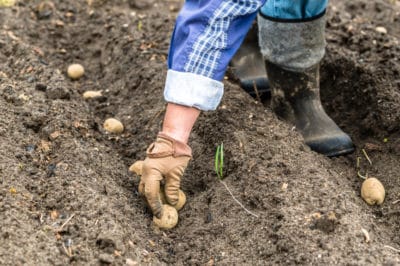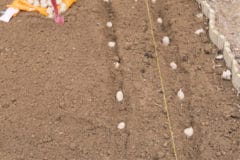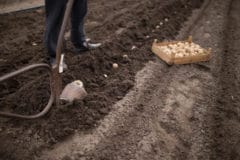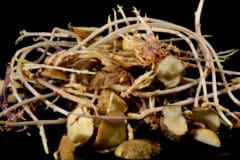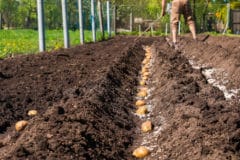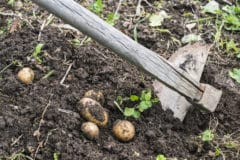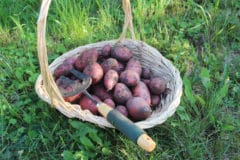Growing Potatoes
No matter where you garden, you must meet the potato’s basic requirements to get a good crop. Potatoes need friable, rich soils that drain well. In many areas of Texas that means you must amend them with well-aged manure, rotted leaves or organic compost. Wood ashes can help promote acidity, which potatoes prefer. Water enough to keep the soil uniformly deep.
Potato Varieties for Texas
Although russet-type potatoes in general are not well-suited for the Texas climate, you have other options. They include:
- Red-skinned or red-fleshed varieties like LaSoda, Pontiac, Dark Red Norland and Viking.
- Yellow-fleshed varieties like Yukon Gold.
- Fingerlings like French Fingerling, Banana and Purple Peruvian.
- Russets – experiment with Century Russet, Norgold M and Russet Norkatah.
USDA Zones in Texas
USDA Zones in Texas range from Zone 6B in the northern panhandle to Zone 10B in the southern tip. Temperatures have a similar range, with winter lows in the north between 5 and 0°F (-21 to -18°C). Winter lows in the south average 30 to 35°F (-1 to 2°C). The average last frost date in the panhandle is April 15th to April 30th, while the last freeze in the southern tip may be as early as the middle of January.
Spring Planting
Unless you live in one of the no-frost areas of Texas, spring planting may be the best choice for your potatoes. Sprout, or chit, the seed potatoes to get the shoots going before planting. Put the potatoes in the ground two or three weeks before that last expected frost date. Plant about eight inches deep and cover with four inches of soil.
The Colorado Potato Beetle
Potato beetles can decimate a potato crop and in Texas, they can easily produce three generations a year. If you garden in an area where potato beetles are found, the earlier you can plant the better. The beetles may emerge from the soil as early as May and almost immediately begin to breed. Plant an early season potato variety and sprout the seed potatoes at least three weeks before the last frost – you may beat the bug.
Fall Planting
In many areas of Texas, you may be better off to plant your potatoes in the fall. Fall planting allows the seed potatoes to spend the cool months of winter developing a sizable root system. When temperatures warm in spring, they are ready to support a big flush of vegetative growth. Plant in a trench eight inches deep and cover with six inches of soil. Water in well.
